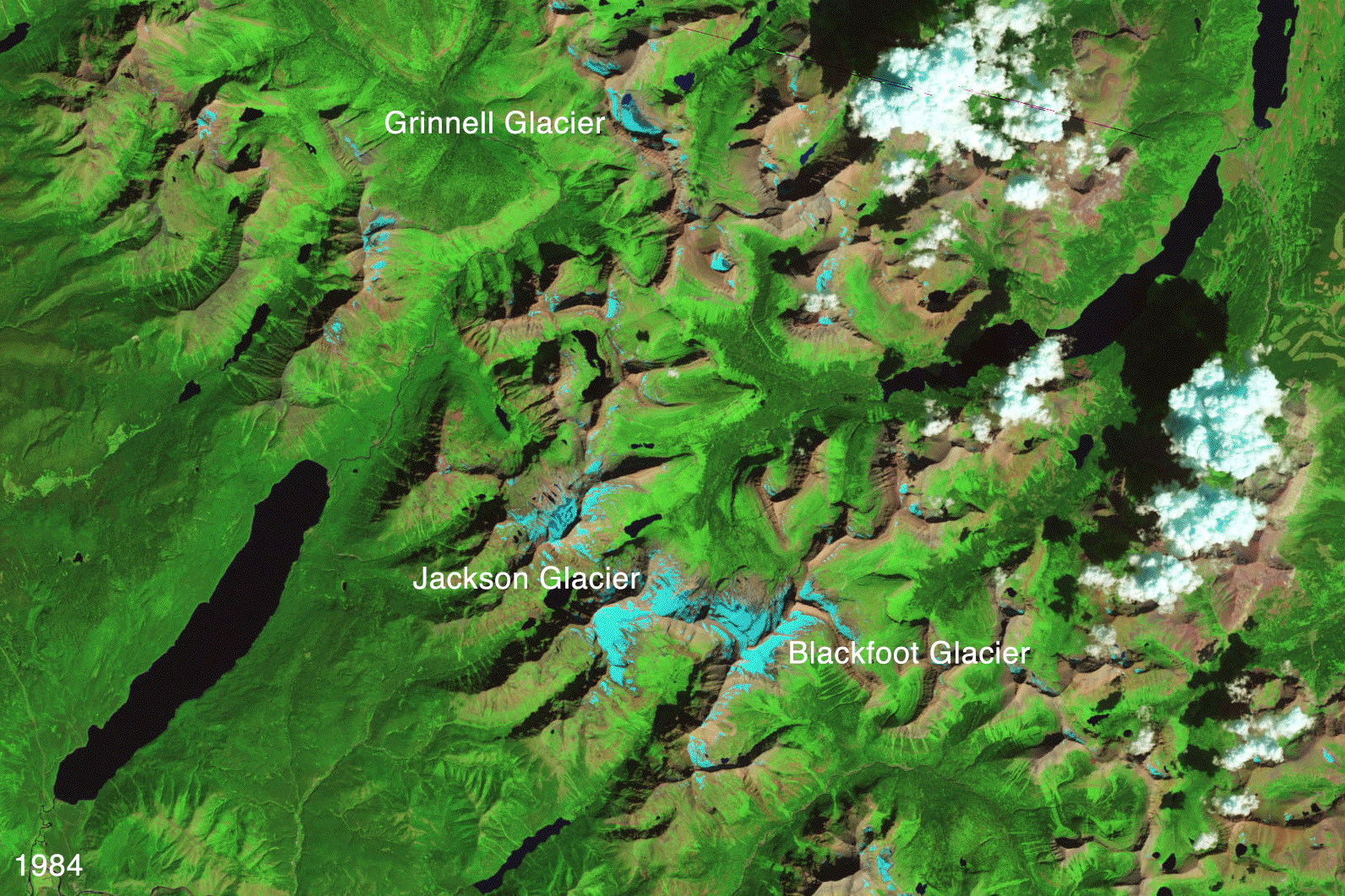
The Blackfoot-Jackson basin contains the largest concentration and the largest glaciers in Montana’s Glacier National Park. According to a scientific study started in the 1990s, the park could lose even its largest glaciers by 2030.
This animation, using images from the Landsat 5 and 8 satellites, shows the glaciers’ retreat from 1984 to 2015.
The blue in the images above represents “permanent” snow and ice. The red in the southeast corner is a burn scar from the Thompson forest fire.
Research ecologist Daniel Fagre says that as time goes on, these once massive ice features will become “small insignificant lumps of ice on the landscape.”
“These tiny remnants could last 10 to 15 years past that time if they are in sheltered places, but the park will no longer really have viable glaciers,” Fagre says.
Worldwide, melting ice has been one of the clearest indications of long term climate change.
More Must-Reads from TIME
- Where Trump 2.0 Will Differ From 1.0
- How Elon Musk Became a Kingmaker
- The Power—And Limits—of Peer Support
- The 100 Must-Read Books of 2024
- Column: If Optimism Feels Ridiculous Now, Try Hope
- The Future of Climate Action Is Trade Policy
- FX’s Say Nothing Is the Must-Watch Political Thriller of 2024
- Merle Bombardieri Is Helping People Make the Baby Decision
Contact us at letters@time.com